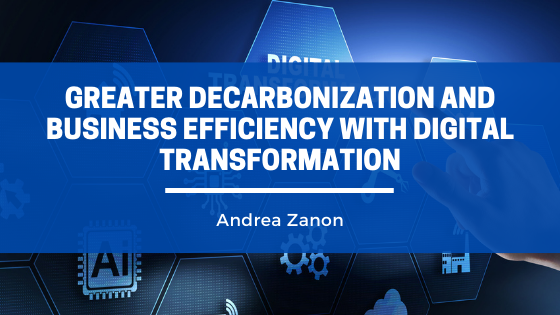Sustainability and climate change have affected almost every area of life, including how companies conduct business. Decarbonization practices evolved from the systemic changes in the industry to address concerns related to protecting the environment. Specifically, decarbonization may refer to reducing carbon buildup or transitioning to newer technologies that minimize the production of greenhouse gasses, such as carbon dioxide. Decarbonization can also mean adopting carbon neutrality approaches which mitigate any carbon footprint by either using renewable energy more systematically, or by trading carbon emission through the very liquid carbon markets.
How Digital Transformation Helps with Decarbonization
Increasing carbon dioxide levels in the atmosphere have been linked to several reductions in global industries. For example, research shows that higher carbon dioxide levels in the atmosphere have resulted in a 5% decrease in grain production. By pursuing digital transformation, companies can sustain or improve performance as it is affected by climate change. In line with the strategies of decarbonization, digital transformation aims to enhance business operations with practices that will either reduce greenhouse gas emissions or the buildup of carbon dioxide in operations.
Digital Transformation Practices for Higher Efficiency
Two approaches within digital transformation that are proven to boost efficiency are microgrids and grid automation. Both of these decarbonization solutions demonstrate how digital transformation will lead to greater business efficiency.
Microgrids
Microgrids are used to generate electricity for a specific area, such as a company campus, factory, or industrial plant. The system may include a variety of components, such as solar panels, fossil fuel generators, and wind turbines. Additionally, microgrids have facilities for storing the generated energy. From an efficiency standpoint, microgrids help by ensuring that electricity is available under any circumstances. The use of eco-friendly designs, such as solar and wind, contributes to the goals of decarbonization.
Grid Automation
Grid automation operates on a larger scale than microgrids. In this design, electric companies change how they generate and store electricity for their customers. This most often involves reducing reliance on fossil fuels and implementing options with renewable energy.
Digital Transformation for Electricity Distribution
By introducing new methods of producing electricity through digital transformation, companies can be more flexible with meeting demand and offer improved services to customers. Other benefits include improving sustainability, managing costs, enhancing reliability, and optimizing operations. Companies that have used digital transformation find that they can more easily provide their customers with the same or higher levels of quality for their goods and services.

